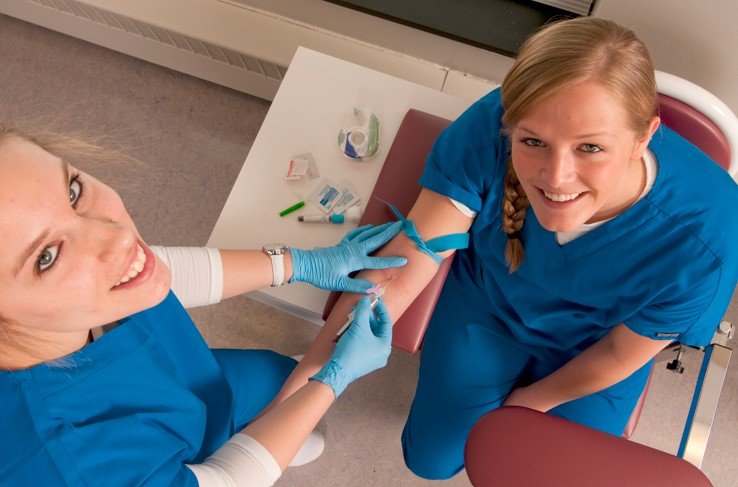Key Considerations for Selecting and Implementing New Medical Equipment in Hospitals
Summary
- Hospitals must carefully consider factors such as budget, technology, and regulatory compliance when selecting and implementing new medical equipment.
- Engaging key stakeholders and conducting thorough research are crucial steps in the decision-making process.
- Proper training and maintenance protocols are essential for maximizing the benefits of new medical equipment and ensuring patient safety.
Introduction
Managing supplies and equipment in a hospital setting is a complex and crucial task. One of the key aspects of this responsibility is selecting and implementing new medical equipment. Hospitals must carefully assess their needs, budget constraints, and regulatory requirements to ensure that they invest in the right technology and equipment to improve patient care and outcomes. In this article, we will explore the key considerations for selecting and implementing new medical equipment in a hospital setting.
Factors to Consider
Budget
One of the most important considerations when selecting new medical equipment is the hospital's budget. Healthcare facilities must balance the need for cutting-edge technology with financial constraints to ensure that they invest in equipment that will provide value for money. Hospitals must consider not only the initial cost of the equipment but also ongoing maintenance and training costs. Conducting a thorough cost-benefit analysis can help facilities make informed decisions about which equipment to purchase.
Technology
Advances in medical technology are continually transforming healthcare delivery and patient outcomes. When selecting new medical equipment, hospitals must consider the latest technological advancements and how they can benefit their patients. It is essential to assess whether the technology aligns with the hospital's long-term goals and strategic objectives. Additionally, compatibility with existing systems and interoperability with other equipment should also be evaluated to ensure seamless integration into the clinical Workflow.
Regulatory Compliance
Compliance with regulatory requirements is another critical factor to consider when selecting and implementing new medical equipment. Hospitals must ensure that the equipment meets all relevant safety and Quality Standards set forth by organizations such as the Food and Drug Administration (FDA) and the Centers for Medicare & Medicaid Services (CMS). Failure to comply with these Regulations can result in penalties, fines, and, most importantly, compromised patient safety. It is essential to work closely with regulatory bodies and manufacturers to guarantee that the equipment meets all necessary standards.
Decision-Making Process
Stakeholder Engagement
Engaging key stakeholders, including clinicians, administrators, IT staff, and procurement specialists, is essential when selecting new medical equipment. Each stakeholder brings a unique perspective and expertise that can help inform the decision-making process. By involving all relevant parties from the outset, hospitals can ensure that the chosen equipment meets the needs of various departments and aligns with the hospital's overall strategic goals.
Research and Evaluation
Thorough research and evaluation are essential steps in the selection process for new medical equipment. Hospitals should conduct extensive market research, gather feedback from other facilities that have implemented similar technology, and evaluate the equipment's performance and reliability. It is also crucial to consider factors such as the manufacturer's reputation, customer support services, and availability of spare parts when making a decision. By gathering as much information as possible, hospitals can make informed choices that will benefit both patients and staff.
Implementation and Training
Training and Education
Proper training and education are essential for maximizing the benefits of new medical equipment and ensuring that staff can effectively and safely use the technology. Hospitals should develop comprehensive training programs that cover not only the technical aspects of the equipment but also best practices for patient care. Ongoing education and support are also crucial to ensure that staff remain up-to-date on the latest developments and can troubleshoot any issues that may arise.
Maintenance and Support
Regular maintenance and support are critical for ensuring the longevity and efficiency of new medical equipment. Hospitals should establish clear maintenance protocols, schedule regular inspections, and promptly address any technical issues that may arise. It is also essential to maintain open communication with the equipment manufacturer to access technical support and spare parts when needed. By prioritizing maintenance and support, hospitals can maximize the lifespan of the equipment and minimize downtime that could impact patient care.
Conclusion
Selecting and implementing new medical equipment in a hospital setting requires careful consideration of factors such as budget, technology, and regulatory compliance. By engaging key stakeholders, conducting thorough research, and prioritizing training and maintenance, hospitals can make informed decisions that will benefit both patients and staff. Investing in the right equipment can improve the quality of care, enhance operational efficiency, and ultimately, save lives.

Disclaimer: The content provided on this blog is for informational purposes only, reflecting the personal opinions and insights of the author(s) on the topics. The information provided should not be used for diagnosing or treating a health problem or disease, and those seeking personal medical advice should consult with a licensed physician. Always seek the advice of your doctor or other qualified health provider regarding a medical condition. Never disregard professional medical advice or delay in seeking it because of something you have read on this website. If you think you may have a medical emergency, call 911 or go to the nearest emergency room immediately. No physician-patient relationship is created by this web site or its use. No contributors to this web site make any representations, express or implied, with respect to the information provided herein or to its use. While we strive to share accurate and up-to-date information, we cannot guarantee the completeness, reliability, or accuracy of the content. The blog may also include links to external websites and resources for the convenience of our readers. Please note that linking to other sites does not imply endorsement of their content, practices, or services by us. Readers should use their discretion and judgment while exploring any external links and resources mentioned on this blog.
